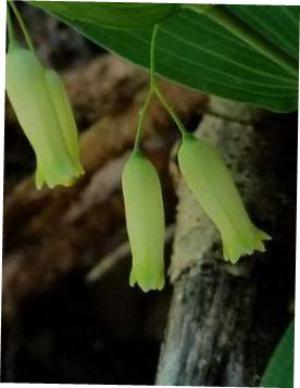Polygonatum lasianthum
(Polygonatum lasianthum)

Description
Polygonatum lasianthum, often referred to as Solomon's seal, is a perennial plant species belonging to the family Asparagaceae. It is one of over 60 recognized species in the Polygonatum genus, a group of plants known for their rhizomatous growth and hanging, tubular flowers. Known for its delicate, ornamental beauty, and medicinal properties, Polygonatum lasianthum has been an integral part of many cultures for centuries. Botanical Description Polygonatum lasianthum is a deciduous plant that typically grows to heights of 20-40 inches (50-100 cm). The plant is characterized by arching, unbranched stems that originate from thick, horizontally-growing rhizomes. The leaves are alternate, linear-lanceolate in shape, and up to 15 cm long. They are typically green on the top surface, and a slightly paler shade of green on the underside. The flowers of Polygonatum lasianthum are one of the most distinctive aspects of the plant. Each stem bears several pendulous, tubular flowers that hang from the leaf axils. The flowers, which bloom in late spring to early summer, are creamy white to pale yellow and often have a greenish tint. Each flower is 1-2 cm long, with six tepals (petal-like segments) that are fused at the base to form a tube. The flowers are usually followed by blue-black berries in the fall. The root system of Polygonatum lasianthum consists of a rhizome and fibrous roots. The rhizome, which can grow several feet in length, is knobbly, with a creamy white interior and a thick, rough exterior that ranges from light brown to dark brown in color. Distribution and Habitat Polygonatum lasianthum is found in temperate regions of the northern hemisphere, including East Asia and North America. It favors woodland habitats, growing naturally in shaded areas with well-drained, loamy soil. The species shows a particular preference for the understories of deciduous and mixed forests. Cultivation As a hardy and shade-tolerant plant, Polygonatum lasianthum is often used in woodland gardens, shade gardens, or as a ground cover plant in areas with partial shade. The plant prefers slightly acidic to neutral pH levels, and while it can tolerate a variety of soil types, it performs best in humus-rich, well-drained soil. Planting should be done in the spring, with rhizomes planted 2-3 inches deep and spaced about 6 inches apart. The plant requires regular watering, but care should be taken to avoid waterlogging, which can lead to root rot. While Polygonatum lasianthum can tolerate dry conditions, its growth and flowering will be optimal with consistent moisture. Uses Polygonatum lasianthum, like many other species in the genus, is valued for its ornamental qualities and its medicinal uses. In the garden, it is cherished for its elegant, arching stems and bell-shaped flowers, which provide visual interest from spring through fall. Medicinally, the rhizomes of Polygonatum lasianthum have been used in traditional Chinese medicine for centuries, primarily for their tonifying effects on the spleen and stomach. They are believed to have a variety of properties, including anti-inflammatory, immunostimulant, and antioxidant effects. Research is ongoing into these potential medicinal benefits. Wildlife The flowers of Polygonatum lasianthum attract a variety of pollinators, including bees and butterflies. The blue-black berries are a source of food for birds and small mammals. Conservation Polygonatum lasianthum is not considered to be at significant risk. However, like all wild species, it can be affected by habitat loss and overharvesting for medicinal use. Conservation efforts are focused on habitat preservation and sustainable harvesting practices. Conclusion Polygonatum lasianthum, with its elegant growth habit, charming flowers, and medicinal uses, is a noteworthy member of the Asparagaceae family. Its value extends beyond its ornamental beauty, serving as an important resource in traditional medicine and as a provider of food for wildlife. Whether found in a garden setting or its natural woodland habitat, this plant offers a unique combination of visual appeal and ecological significance.
Taxonomic tree:







